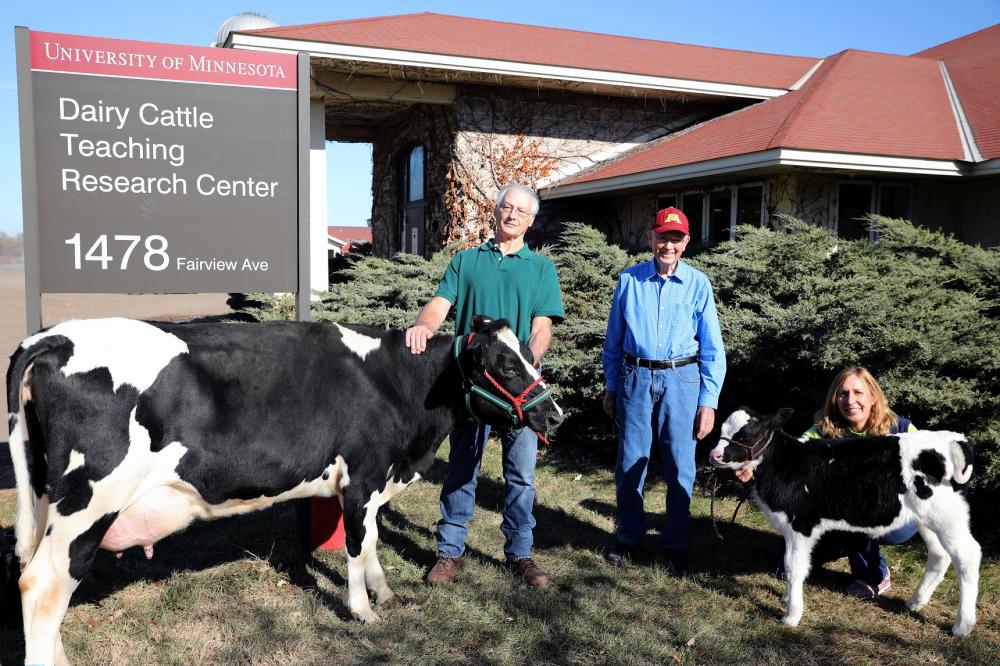Unique U of M Holsteins from the 1960s are less susceptible to mastitis than contemporary dairy cows
April 3, 2023

Brian Crooker and Charles Young (retired), professors in the Department of Animal Science and Sandra Godden, an associate dean and professor in the Department of Veterinary Population Medicine in the College of Veterinary Medicine, with an unselected cow and her calf. Dr. Young developed the unselected (control) Holstein herd in 1964.
For almost 60 years, the University of Minnesota has maintained a one-of-a-kind herd of Holsteins. Scientists have shown these unique “unselected” Holsteins offer considerable potential to help improve health traits of dairy cows. This includes a greater resistance to mastitis, a common infection in dairy cattle that decreases global milk production and can cause major health concerns for afflicted cows.
Researchers in the Department of Animal Science in the College of Food, Agricultural and Natural Resource Sciences, the College of Veterinary Medicine, and the USDA-Agricultural Research Service have collaborated to compare the unselected Holsteins to contemporary Holsteins to understand how selection since the mid-1960s has impacted overall cow health. In their most recent study, they demonstrated that selection practices have reduced an immune system response to Gram-negative bacteria, which is one type of bacteria that causes mastitis. This reduced response in contemporary Holsteins is consistent with the team’s earlier work that demonstrated their ability to defend against mastitis caused by E. coli is less than that of the unselected Holstein.
Read the full study in Veterinary Immunology and Immunopathology, and learn more about these unique cows here.


